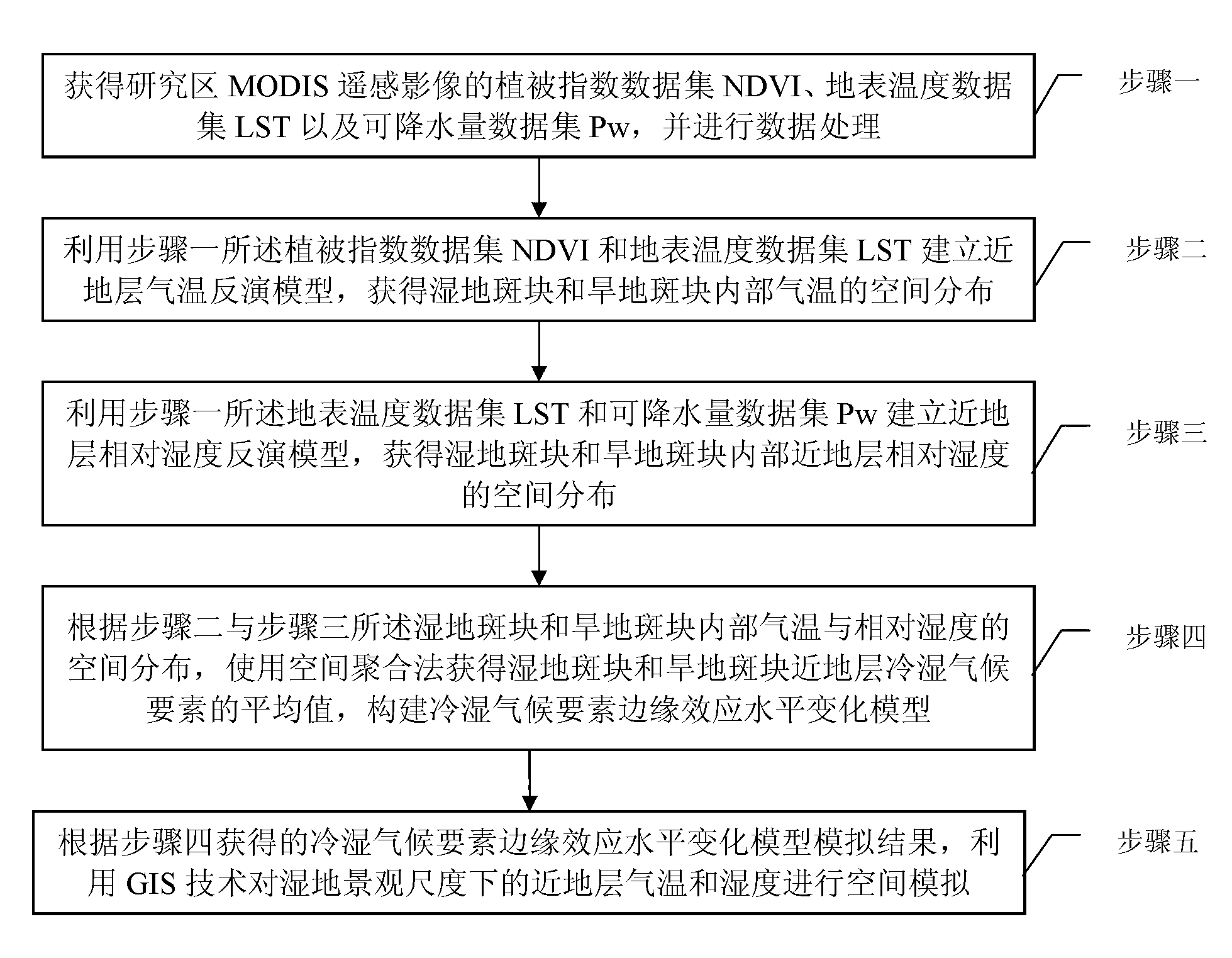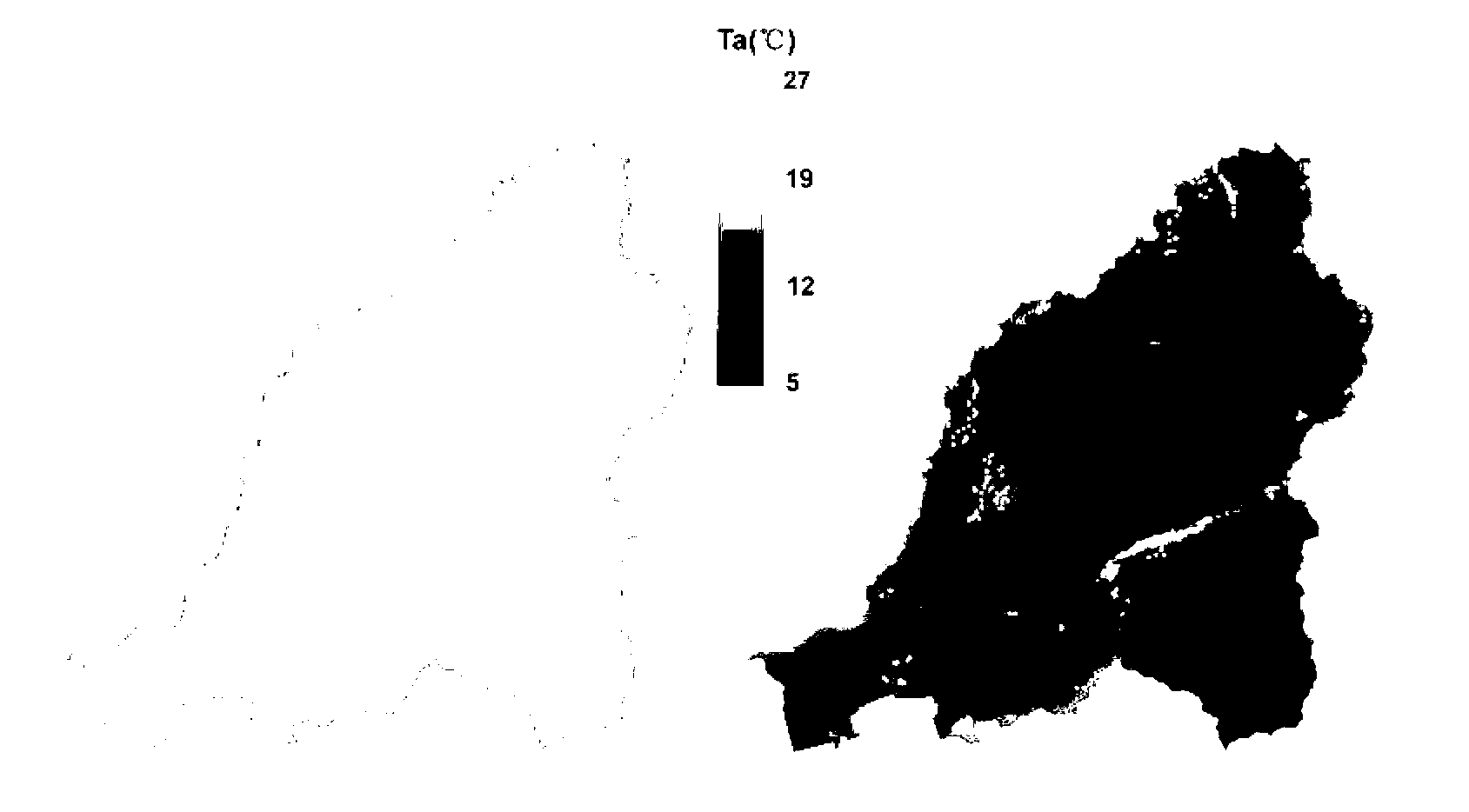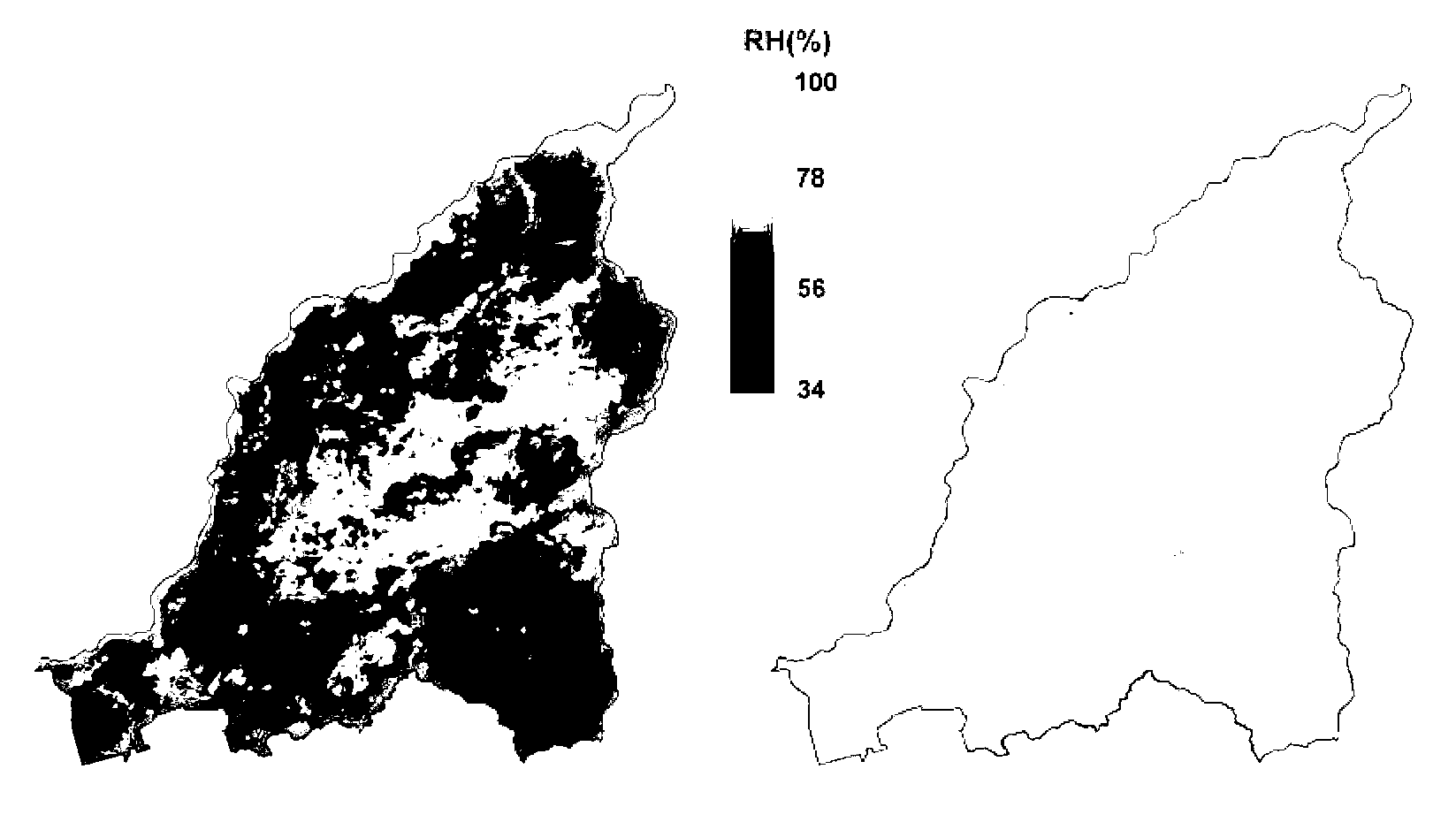Wetland landscape surface layer cold and wet climatic element GIS space simulation method based on remote sensing data
A technology for wetland landscape, cold and wet climate, applied in the fields of climate sustainability, electrical digital data processing, special data processing applications, etc., can solve the problem of inability to obtain high-precision temperature spatial distribution, etc. The effect of increasing the amount of radiation and improving the radiometric resolution
- Summary
- Abstract
- Description
- Claims
- Application Information
AI Technical Summary
Problems solved by technology
Method used
Image
Examples
specific Embodiment approach 1
[0049] Specific implementation mode 1. Combination figure 1 - Fig. 9 illustrates a kind of remote sensing data-based GIS spatial simulation method of wetland landscape near-surface cold and wet climate elements in this embodiment, which includes the following steps:
[0050] Step 1: Obtain the vegetation index data set NDVI, the land surface temperature data set LST and the precipitable precipitation data set Pw of MODIS remote sensing images in the study area, and perform data processing;
[0051] Step 2: Use the vegetation index data set NDVI and the surface temperature data set LST described in step 1 to establish a near-surface temperature inversion model to obtain the spatial distribution of the internal temperature of wetland patches and dryland patches;
[0052] Step 3: use the surface temperature data set LST and the precipitable precipitation data set Pw described in step 1 to establish a near-surface relative humidity inversion model to obtain the spatial distributio...
specific Embodiment
[0094] Step 1: Obtain MODIS (Moderate-resolution Imaging Spectroradiometer) 16-day vegetation index dataset NDVI, 8-day surface temperature dataset LST and daily precipitation data from the US Geological Survey (USGG) website Set Pw and perform data processing;
[0095] Using MRT and HEG software, all MODIS HDF files are image stitched and projectively converted, Albers projection is selected, the reference ellipsoid is WGS84, and the radiometric calibration is carried out for a set of research area clipping;
[0096] Obtain the spatial distribution of water bodies through land use data, perform water masking on vegetation index data set NDVI, land surface temperature data set LST, and precipitable precipitation data set Pw, and remove outliers and invalid values; then, perform cloud processing to remove Outliers and invalid values affected by the cloud.
[0097] At 8-day intervals, the morning near-infrared and infrared data of the daily precipitable precipitation data set a...
PUM
 Login to View More
Login to View More Abstract
Description
Claims
Application Information
 Login to View More
Login to View More - R&D
- Intellectual Property
- Life Sciences
- Materials
- Tech Scout
- Unparalleled Data Quality
- Higher Quality Content
- 60% Fewer Hallucinations
Browse by: Latest US Patents, China's latest patents, Technical Efficacy Thesaurus, Application Domain, Technology Topic, Popular Technical Reports.
© 2025 PatSnap. All rights reserved.Legal|Privacy policy|Modern Slavery Act Transparency Statement|Sitemap|About US| Contact US: help@patsnap.com



